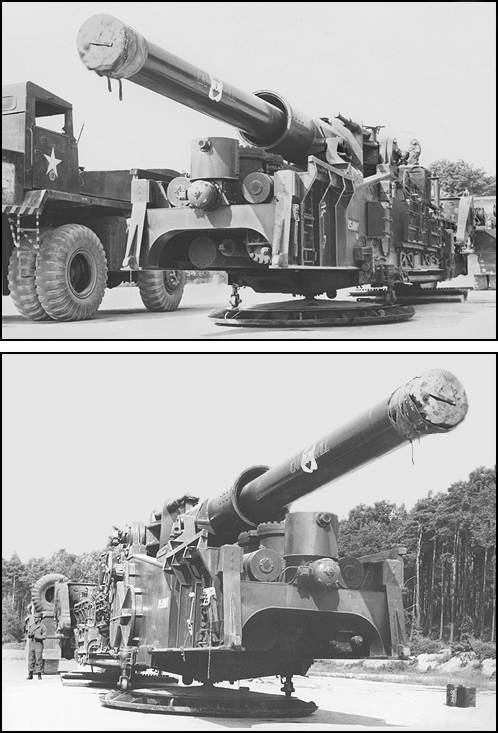|
280MM "ATOMIC CANNON" AT GRAFENWOEHR IN 1961
Photo by Sp4 Merritt Nesin
V Corps weapon in support of the 3AD during 1957-1963
See captions below.
CLICK to enlarge top photo

| |
The above two photos of a 3rd Bn, 82nd
Artillery (V Corps) Atomic Cannon were taken in 1961 during one
of the weapon's twice-yearly, non-nuclear test firing trips to
Grafenwoehr, and on this occasion in conjunction with the 3AD's
2nd Bn, 73rd Artillery. |
ATOMIC CANNON TECHNICAL INFO:
| |
The 280mm M65 was taken out of service by the
Army in 1963, ten years after it became the world's first artillery
piece to live-fire a nuclear shell. It was never used in battle.
That first and only nuclear test-firing occurred in 1953 at Frenchman
Flat, Nevada, at a range of 7 miles. The 15 kiloton blast was
the equivalent of the Hiroshima A-bomb.
A total of twenty cannons were built, with about ten to sixteen
(reports vary) sent to Germany in the mid 1950's for the 7th
Army. Of an all mechanical & hydraulic design, with no electronics,
the M65 could fire a 600 lb. shell (nuclear or conventional)
up to 18 miles. If the hydraulics failed, the gun could be aimed
manually by turning geared wheels. The weapon was fired from
an attached trailer/base that was transported by two tractor-trucks,
one to pull and one to push. The barrel had a full length of
38.5 feet. One cannon, including transport vehicles and a separate
armored ammunition carrier, required a total crew of 22.
Three different kiloton sizes of nuclear shells were available.
3rd Armored Division troops were often responsible for guarding
a portion of these shells that was stored at Top Secret locations
outside of Frankfurt. Several of the original M65's are now civilian
owned and on display. Those include one at the National Atomic
Museum in Albuquerque, New Mexico, and one as a roadside attraction
in Junction City, Kansas, near Ft. Riley.
[Sources: U.S. Army & Ft. Sill Artillery
Museum] |
|